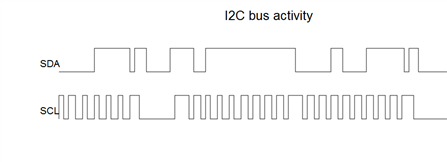I was lucky enough to be selected for an mbed road test, and the mbed package arrived yesterday.
I'd read . Like him I found the product very easy to get going. The website suggests that you can get started in 60 seconds, and that's exactly how long it took me.
I use two PCs - a laptop running Windows 7 64-bit on an AMD processor, and a Linux workstation. Both systems drive the mbed happily. The combination of web-based development and filesystem-based programming is a stroke of genius. It completely bypasses the USB driver problems I've hit with other development products on my Windows machine.
The first project I had in mind for the mbed was a poor man's oscilloscope/logic analyser to help me debug the I2C boards I am working on at the moment. I needed something which would let me visualise the digital signals on the I2C bus, and if possible plot some analogue data as well.
It turned out to be really easy to implement. There's a lot of sample code on the mbed website. It's well organised, and it's easy to search. After a few minutes I was able to write formatted data to the mbed file system, including digital and analogue inputs. I wrote the data out in csv format, and then displayed the results on my PC.
This is a (very simple) example of the sort of prototyping for which the mbed was created. I'm seriously impressed by mbed's ease of use and range of available libraries. I expect to use the mbed a lot for future projects.
For my main review, I'm proposing to port some code I wrote for the arduino using the I2c bus. It's a homebrew version of the microwriter keyboard, and drives an LCD display and an EPROM memory. From what I've seen so far, it looks as if the porting will be very straightforward.
Riccardo has already covered many of the questions people might have about the mbed. Is there anything you would like me to investigate for my review?






